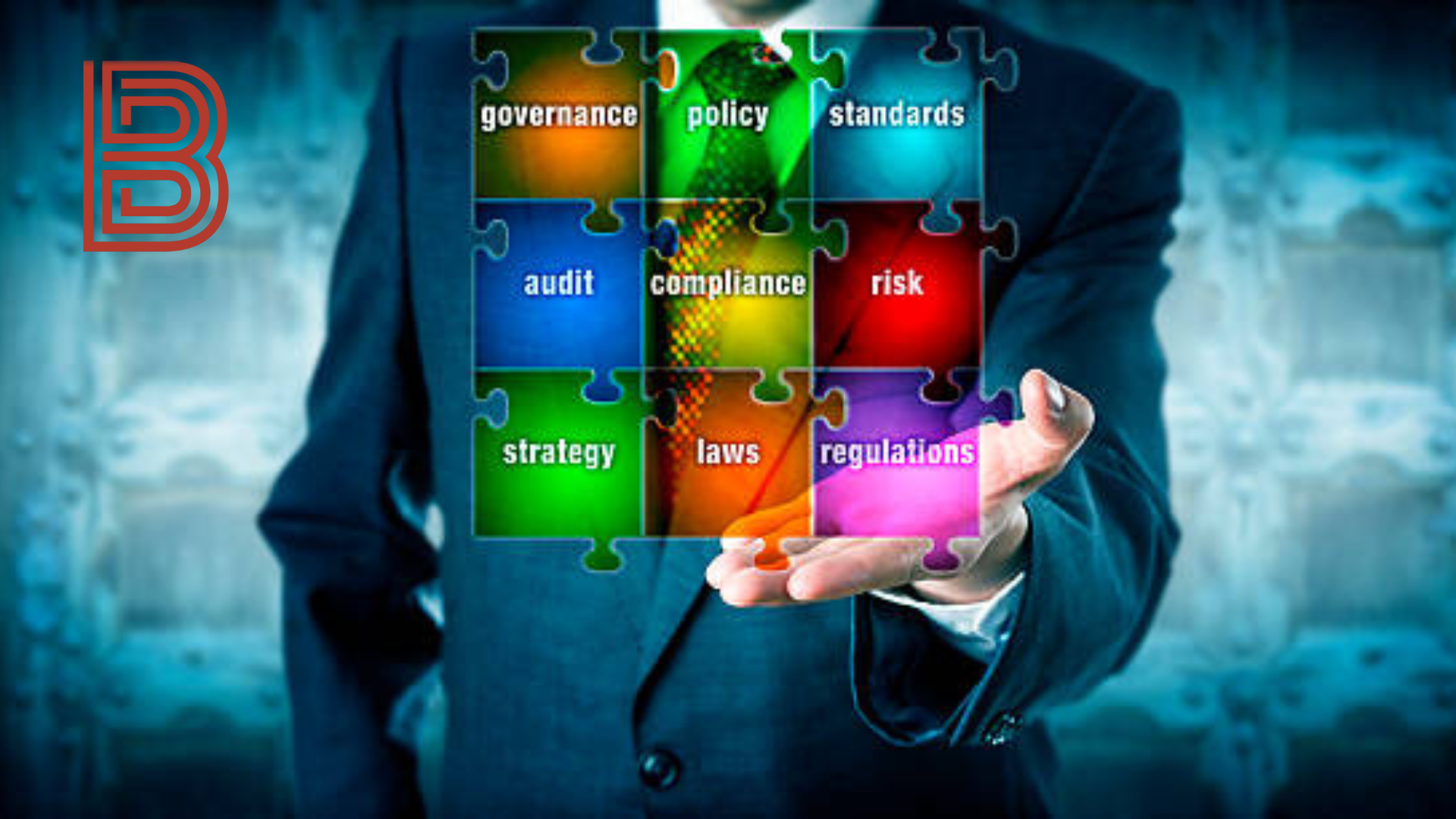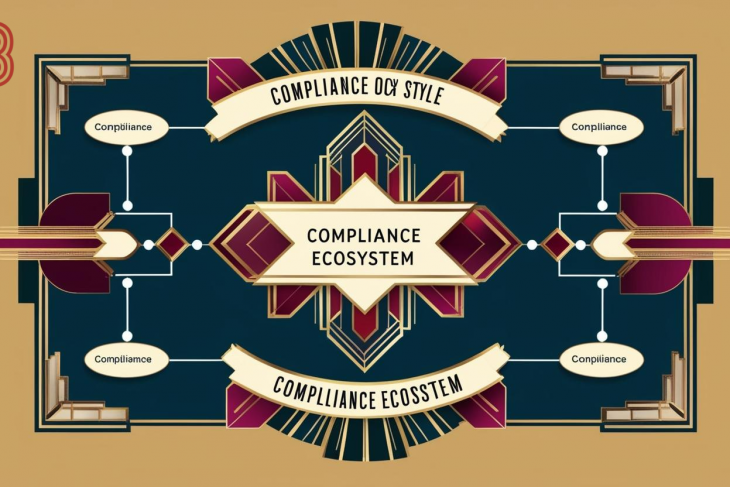
Introduction
Governance, Risk, and Compliance (GRC) is a strategic framework that helps organizations align their IT operations with business objectives, while effectively managing risk and complying with regulations. In an era of digital transformation, where businesses are increasingly dependent on technology and data, GRC has evolved from a back-office function to a core component of enterprise strategy.
GRC fluency, in this context, refers to the maturity, capability, and agility with which an organization integrates GRC principles into its culture and decision-making processes. Being “fluent” in GRC means that the organization doesn’t just comply with rules reactively but proactively embeds governance, risk awareness, and compliance considerations into every level of operation.
Understanding GRC and Its Components
1. Governance
Governance involves establishing clear policies, processes, and structures to guide decision-making and ensure accountability. Good governance ensures that an organization’s operations align with its mission, values, and legal obligations. It promotes transparency, ethical behavior, and consistent performance evaluation.
2. Risk Management
Risk management is the systematic process of identifying, assessing, and mitigating risks that could impede an organization’s objectives. These risks include operational, financial, strategic, cybersecurity, and reputational risks.
3. Compliance
Compliance ensures that an organization adheres to legal, regulatory, and internal policy requirements. With the increase in global regulations such as GDPR, HIPAA, SOX, and ESG disclosures, compliance has become increasingly complex and critical to business sustainability.
What Is GRC Fluency?
GRC fluency goes beyond the traditional implementation of policies and procedures. It refers to an organization’s ability to seamlessly integrate governance, risk, and compliance into its strategic and operational frameworks. It requires:
Cultural Alignment: Employees at all levels understand and value GRC.
Technological Integration: Risk and compliance systems are interconnected across departments.
Agile Response: The organization can adapt to regulatory changes and emerging risks quickly.
Proactive Risk Management: Issues are anticipated and addressed before they escalate.
Strategic Value Creation: GRC becomes a driver of performance, not just a cost center.
Why GRC Fluency Matters in Risk Management1. Enhanced Decision-Making
When risk information is visible and accessible across the enterprise, decision-makers can better evaluate the implications of strategic moves. GRC fluency ensures that decisions are made with a comprehensive view of risks, opportunities, and compliance obligations.
Operational Resilience
Fluent GRC practices help organizations withstand disruptions—be it a cyberattack, supply chain crisis, or regulatory overhaul. With predictive risk modeling and automated alerts, GRC fluency enhances resilience.
Regulatory Readiness
With rapidly changing laws and regulations across industries, staying compliant is a moving target. GRC fluency enables an agile compliance posture, reducing the risk of fines, litigation, and reputational damage.4. Trust and Reputation
Strong GRC practices promote transparency and accountability, which build stakeholder trust. This is critical for investors, partners, regulators, and customers who expect ethical and compliant behavior.
Cost Efficiency
A unified GRC strategy reduces redundancy, improves audit processes, and cuts the costs of managing risks and compliance in silos.
Key Elements of GRC Fluency in Risk Management
Integrated Risk Framework
Organizations must develop an integrated risk management (IRM) framework that covers all categories of risk—strategic, operational, financial, and compliance. A unified risk taxonomy and assessment methodology should be adopted across departments.2. Enterprise-Wide Visibility
GRC fluency demands that risk data is shared across departments in real time. This requires a centralized system that consolidates risk assessments, audit trails, and compliance reports.3. Automation and Technology
Using GRC software platforms (like RSA Archer, MetricStream, LogicGate) helps automate risk assessments, control monitoring, and compliance tracking. Integration with business intelligence tools enhances insight generation.
Continuous Monitoring
Rather than point-in-time assessments, fluent GRC systems support continuous monitoring of controls, key risk indicators (KRIs), and regulatory changes, enabling real-time risk intelligence.5. Risk Culture and Awareness
GRC fluency relies on a mature risk culture where employees understand their roles in managing risk and compliance. Regular training, incentives, and clear accountability mechanisms are essential.
GRC Fluency Maturity Model
Organizations can assess their GRC fluency using a maturity model, generally comprising five levels:
Initial (Ad hoc): GRC processes are siloed, reactive, and poorly documented.
Developing: Basic risk and compliance programs are in place but lack integration.Defined: Policies and procedures are standardized; some automation exists.
Managed: Risk and compliance are embedded in business processes; metrics are used.
Optimized: GRC is agile, predictive, and fully integrated into strategy and culture.Frameworks Supporting GRC Fluency
Several international frameworks and standards provide guidance for developing GRC fluency in risk management:
1. ISO 31000: Risk Management
ISO 31000 offers principles and guidelines for effective risk management. It emphasizes integrating risk management into all aspects of the organization.
2. COSO ERM Framework
The Committee of Sponsoring Organizations (COSO) provides an Enterprise Risk Management framework that aligns risk management with performance.
3. COBIT (Control Objectives for Information and Related Technologies)
COBIT supports IT governance and aligns IT strategy with business goals, playing a crucial role in technology-driven GRC environments.4. NIST Cybersecurity Framework
For cybersecurity risk management, NIST provides a structure to identify, protect, detect, respond to, and recover from cyber threats.5. GDPR and Other Regulatory Standards
Data protection laws such as GDPR impose obligations that require fluent compliance strategies and data governance frameworks.
Steps to Achieve GRC Fluency
1. Executive Sponsorship
Senior leadership must champion GRC as a strategic priority. This includes investing in systems, setting the tone at the top, and aligning GRC with organizational objectives.
2. Develop a Unified GRC Strategy
Build a centralized GRC strategy that includes clearly defined roles, responsibilities, policies, and performance indicators. Break down silos between departments.
3. Choose the Right Technology
Implement an integrated GRC platform that supports workflows, analytics, automation, and reporting. Ensure it’s scalable and customizable for evolving needs.
4. Embed GRC into Business Processes
Risk management and compliance checks should be embedded into procurement, HR, finance, operations, and IT processes to ensure consistency and accountability.
5. Invest in Training and Awareness
Train employees regularly on risk awareness, compliance obligations, and ethical behavior. Promote a speak-up culture where risks and issues are reported early.
6. Monitor and Measure
Use dashboards and KPIs to monitor GRC performance. Regular audits and self-assessments help identify gaps and drive continuous improvement.
Common Challenges in Achieving GRC Fluency
1. Organizational Silos
Departments often manage risks independently, resulting in duplication, inconsistency, and blind spots. A siloed approach undermines integrated risk views.
2. Resource Constraints
GRC programs require financial investment, skilled personnel, and time—resources that are often limited in small to mid-sized organizations.
3. Evolving Regulatory Landscape
Staying abreast of complex and changing regulations across jurisdictions is difficult. Non-compliance can arise from simple ignorance or misinterpretation.
4. Resistance to Change
Employees may resist new policies or systems, especially when GRC is seen as a burden rather than an enabler. Overcoming this requires change management.
5. Data Fragmentation
Inconsistent or inaccessible data undermines risk analysis and decision-making. Data governance and system integration are key to solving this challenge.
GRC Fluency and Digital Transformation
Digital transformation adds complexity to risk management. As organizations adopt AI, cloud computing, IoT, and automation, they face new risks related to data acy, algorithmic bias, and cyber threats.
GRC fluency enables organizations to navigate digital risks by:
Embedding security by design in digital initiatives.
Aligning IT governance with business objectives.
Using AI for predictive analytics in risk management.
Implementing automated compliance checks for continuous assurance.
Case Studies of GRC Fluency in Practice
1. Financial Services
Banks and insurance companies have been early adopters of integrated GRC platforms to comply with stringent regulations like Basel III, MiFID II, and AML laws. GRC fluency helps them manage reputational risk and customer trust.
2. Healthcare Sector
Hospitals use GRC frameworks to comply with HIPAA, manage clinical risks, and ensure patient safety. Fluent GRC helps integrate risk assessments into clinical operations and digital health platforms.
3. Energy Industry
Oil and gas firms use GRC to manage operational risk, safety compliance, and environmental regulations. Real-time monitoring of safety metrics and regulatory changes enhances operational integrity.
The Future of GRC Fluency
As the regulatory environment becomes more dynamic and stakeholder expectations rise, GRC fluency will be a key differentiator. Emerging trends include:
AI-Driven Risk Insights: Using machine learning to predict and prioritize risks.
Real-Time Compliance Monitoring: Leveraging IoT and blockchain for immutable audit trails.
Sustainability and ESG Integration: Expanding GRC to include environmental and social governance metrics.
Zero Trust Security: Embedding risk-based access and continuous monitoring in cybersecurity.
Human-Centric GRC: Focusing on ethics, leadership, and behavioral risk management.
Summary
GRC fluency is no longer optional—it is essential for sustainable growth, regulatory compliance, and strategic agility. It transforms risk management from a defensive function to a value-creating capability. By aligning governance structures, risk intelligence, and compliance processes, organizations can foster resilience, make better decisions, and earn the trust of stakeholders in an increasingly complex world.
To achieve GRC fluency, organizations must embrace a holistic, integrated, and proactive approach. It requires cultural change, technological investment, executive commitment, and continuous improvement. The journey may be challenging, but the rewards—greater transparency, stronger performance, and long-term sustainability—are well worth the effort.




















